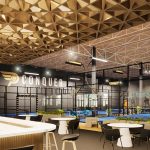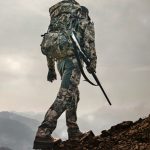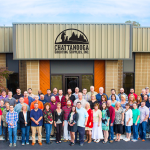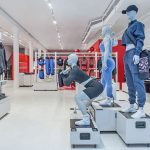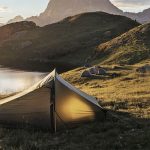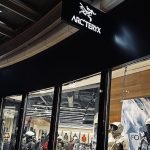Sport Chalet, Inc., which is based in northern LA County and has stores in Nevada, Utah, Arizona, as well as California, announced that it expects same-store sales to fall 7.0% for its fiscal 2008 third quarter ended December 30, compared to a 3.8% gain in Q4 last year. Total net sales were up 1.1% to $116.0 million from $114.7 million in Q3 2007. Management pointed to the SoCal wildfires, late winter weather and a weakening economy for the weaker-than-expected results.
The retailer said it has distinguished itself by offering extensive rental and training programs to its customers to expand the market for everything from snowboarding to SCUBA diving. But, company Chairman and CEO Craig Levra said it struggled with “weak macroeconomic trends” in its core SoCal market, which was shaken by the major wildfires and falling home prices.
As reported last week (SEW_0803), SPCH expects to report a loss per diluted share in the range of 6 cents to 9 cents for the fiscal 2008 third quarter, compared to 28 cents in the prior year's third quarter. Excluding approximately $2.1 million in non-cash impairment charges tied to expenses incurred at certain California stores, the retailer anticipates that it will report earnings per diluted share in the range of breakeven to 3 cents per share.
SPCH expects full fiscal year net sales to increase moderately over fiscal 2007, while comparable store sales are expected to decline approximately 2% to 4%. Net income is expected to be lower than last year.
At ICR, Levra said that hardlines made up 53% of total retail sales, while footwear and apparel combined made up the 47% balance. He said Sport Chalet continued to push to grow the non-winter businesses such as footwear, apparel and athletics in order to balance out the year. He said it has been “crucial,” because California and the Southwest are in the eighth year of a forecasted 20-year drought.
The Sport Chalet stores average $120,000 in rental gear inventory, including canoes, kayaks, tents and sleeping bag, skis, snowboards, wakeboards and water skis. To encourage a customer to embrace a new sport, customers receive two free days of rental if they decide to purchase the item. All of the stores also have golf training nets, as well as air-fill stations for SCUBA tanks and paintball cylinders.
While clearly emphasizing service and brand selection, Levra also said Sports Chalet is studying whether to expand or “de-expand” certain categories in response to Dicks Sporting Goods entry into the SoCal market via its acquisition of Chicks Sporting Goods. SPCH is looking particularly at how “we go to market with golf,” given Dicks Sport Goods strong performance there.
“Our operating models are somewhat different,” Levra said. “We put branded product on the floor, specialty product on the floor, a lot of payroll on the floor. Theres a lot of things we do that they dont do.”
“Although we were able to manage through a difficult business environment in many of our markets during the first nine months of 2007, we, like many retailers, found the holiday period to be extremely challenging,” said Steven Miller, chairman and CEO of Big 5 Corp.
As SEW reported last week, Big 5 was hit hard by a sharp reduction in the wheeled footwear business, which is dominated by Heelys. Mr. Miller suggested that comp store sales for the fourth quarter would have been down 2.6% for the fourth quarter, accounting for 2.1 percentage points of the total 4.7% comp store sales decline for the period. Sales for the category declined $4.9 million compared to the prior-year quarter.
Miller said that product margins for the fourth quarter were down 35 basis points from the prior year, but excluding wheeled footwear, which were “impacted by competitive pricing pressures,” product margins were down 5 basis points for the quarter.
Big 5, which has opened an average of 18 net new stores for the past five years, opened 20 net new stores in 2007 and plans to add 20+ stores annually going forward. They recently opened their first store in Oklahoma and said they “continue to see great growth opportunities” in the markets within the eleven state footprint where they currently operate. Still, they also said they have their eye on contiguous markets.
Management said the Big 5 stores averaged $233 per square foot in 2007 — at “very healthy margins.” Stores average 11,000 square feet.
Roughly half of the business is branded, in-line products and nearly half of sales come from product that is “fundamentally exclusive to Big 5 Sporting Goods,” whether it be private label or SMUs. They see roughly 300 to 500 basis points in higher margins from the product that is exclusive to Big 5.
The retailer now distributes over 13 million circulars every week, in some cases multiple times a week, in every market where they operate. To exemplify the productivity of the ads, Miller said that over 45% of store sales come directly from products in the circulars.
New store productivity is driven by a low upfront investment in CapEx and working capital of approximately $800,000. New stores average about 65% of sales of a mature store in the first full year of operation and typically realize operating margins averaging approximately 15% of sales. Through fiscal 2006, new stores opened since 2001 have generated an average four-wall return on investment of 36% in their first full fiscal year.



